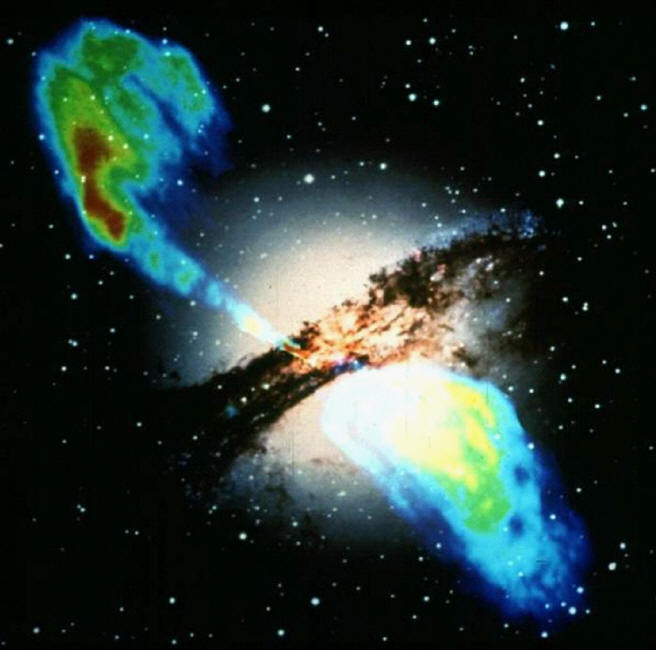|
|
Noisy Space—Electric Space
Feb 23, 2009
A recent press release announced
the measurement of background radio
noise over six times what was “hoped
for” based on data from a
NASA-funded high altitude helium
balloon.
Space scientists from NASA and UC
Berkeley recently
announced that the Absolute
Radiometer for Cosmology,
Astrophysics, and Diffuse Emission
(ARCADE) findings uncovered
unexpectedly high radio emissions
from the cosmic background. There is
no mistaking the unmitigated
surprise from the investigators at
this discovery.
The researchers had expected to
identify weak background radio noise
from early star formation after the
Big Bang. However, in the words of
the principle investigator, Alan
Kogut, “Instead of the faint signal
we hoped to find, here was this
booming noise six times louder than
anyone had predicted.”
According to the investigators,
there are no theories to explain the
unusually high background signal
level. But what if the space between
galaxies is a source of synchrotron
radio emissions?
Built to rise to 120,000 feet,
ARCADE is the first instrument
sensitive enough to detect this
radio signal. The radio receivers
are immersed in 500 gallons of
liquid helium, which keeps them at
2.7 Kelvin (2.7 degrees above
absolute zero) to enhance their
sensitivity.
In determining background radio
noise, the researches must subtract
out known sources to arrive at a
true background value. This is
difficult, besides being rife with
assumptions and potential errors.
However, what if the space between
galaxies is not “radio-neutral” and
there’s a source they have not
allowed for?
What if the galaxies are formed,
powered and connected by Birkeland
currents stretching billions of
light-years? These field-aligned
Birkeland currents are a predictable
and inevitable formation of diffuse
plasma. The currents are proposed to
have magnitudes ranging up to a
billion billion Amperes (Peratt,
1990).
According to Peratt (1990), the
diameter of a typical current can be
in the range of 100,000 light-years
and separated from a neighboring
current by about the same distance.
The length of the currents (based on
laboratory analogues) can be upwards
of 10 billion light-years with an
average length of 100 million
light-years.
As Peratt points out in his paper,
the currents, which coalesce and
twist around each other into
“magnetic ropes,” are not observable
themselves. But they can be detected
by the matter that they pull in to
form filaments along their lengths.
Very tenuous cosmic plasma will
self-organize into a cellular plasma
structure with filamentary surface
currents that concentrate diffuse
matter.
It is reasonable to predict that the
unusually high background radio
noise observed by ARCADE should be
higher than expected because there
is a potential source that has not
been subtracted out: the
intergalactic Birkeland currents. As
long as astronomers continue to
visualize galaxies as separate
islands in space, they will miss a
large piece of the puzzle.
There is an immensely large volume
of space between the galaxies that
could be electromagnetically active.
The Birkeland currents between the
galaxies emit synchrotron radiation,
not nearly as intense as the more
energetic z-pinches of the galaxies
and stars, but there nonetheless.
As Philip Lubin, one of the team
members of the ARCADE study, said,
"The universe continues to amaze us
and provide us with new mysteries.
It is like a large puzzle that we
are slowly given pieces to so that
we can eventually see through the
fog of our confusion."
A large part of that confusion
arises from not learning from our
terrestrial aurora that Birkeland
currents across a wide scale of
magnitudes are a very active
component of the electrical life of
the Universe.
By Tom Wilson
|
|
|
|
|
|
SPECIAL NOTE - **New Volumes Available:
We are pleased to announce a new
e-book series
THE UNIVERSE ELECTRIC. Available now, the first volume
of this series, titled Big Bang, summarizes the failure of modern cosmology
and offers a new electrical perspective on the cosmos. At
over 200 pages, and
designed for broadest public appeal, it combines spectacular
full-color graphics with lean and readily understandable
text.
**Then second and third volumes in the series are now available,
respectively titled Sun and Comet, they offer
the reader easy to understand explanations of how and why these bodies
exist within an Electric Universe.
High school and college students--and teachers in
numerous fields--will love these books. So will a large
audience of general readers.
Visitors to the Thunderbolts.info site have often
wondered whether they could fully appreciate the Electric
Universe without further formal education. The answer is
given by these exquisitely designed books. Readers from
virtually all backgrounds and education levels will find them
easy to comprehend, from start to finish.
For the Thunderbolts Project, this series is a milestone.
Please see for yourself by checking out the new
Thunderbolts Project website, our leading edge in
reaching new markets globally.
Please visit our
Forum
|
|
|
|
|
|
|
|







